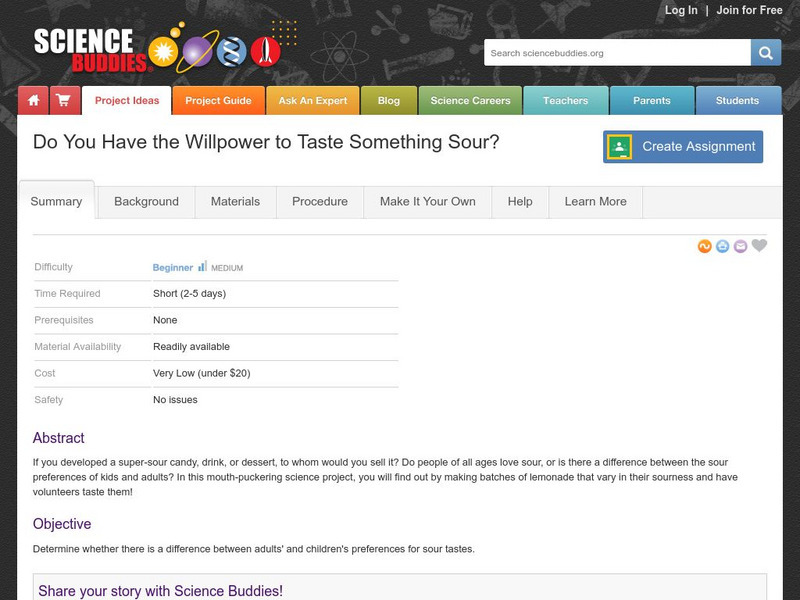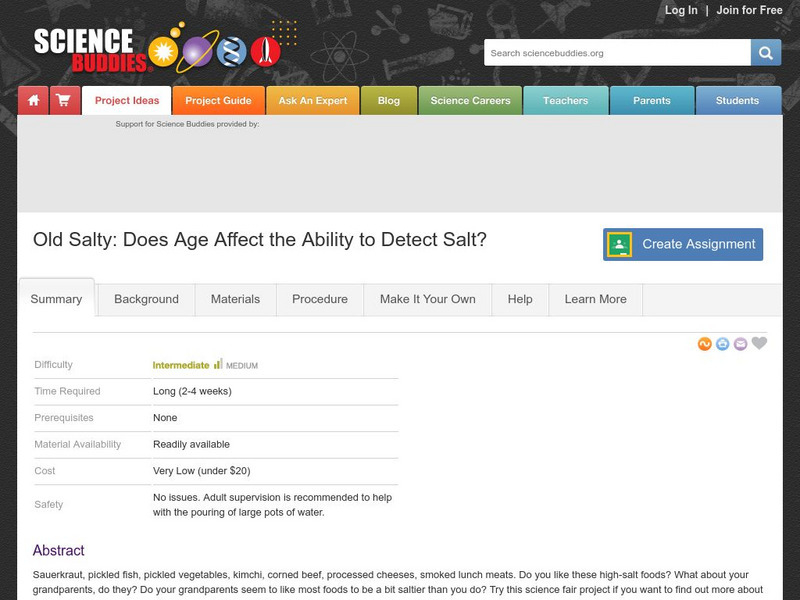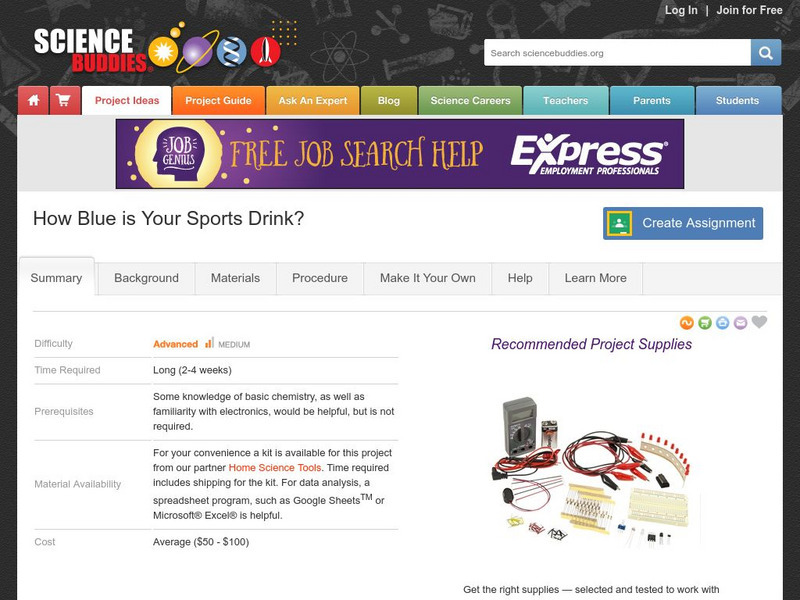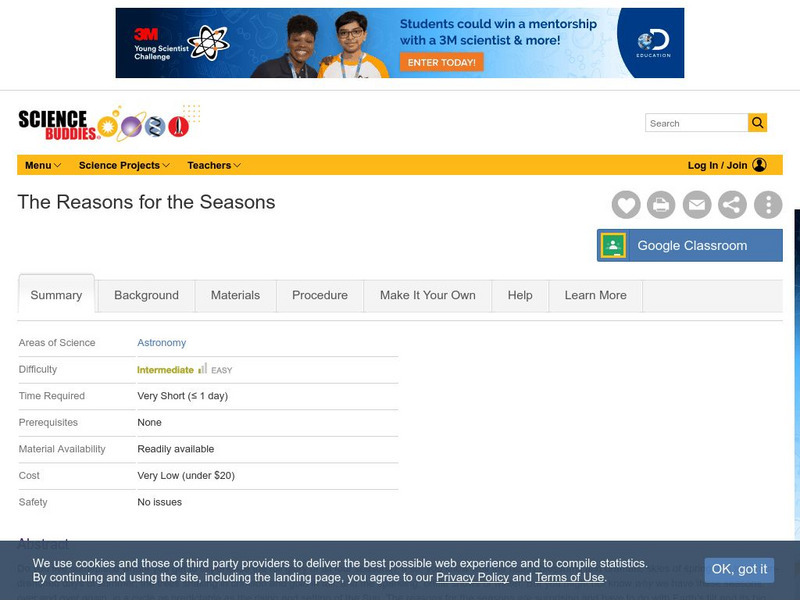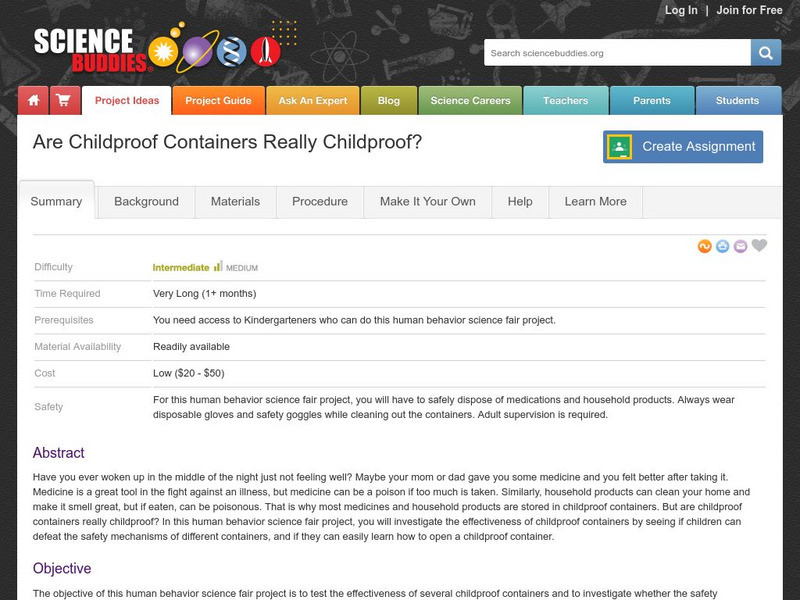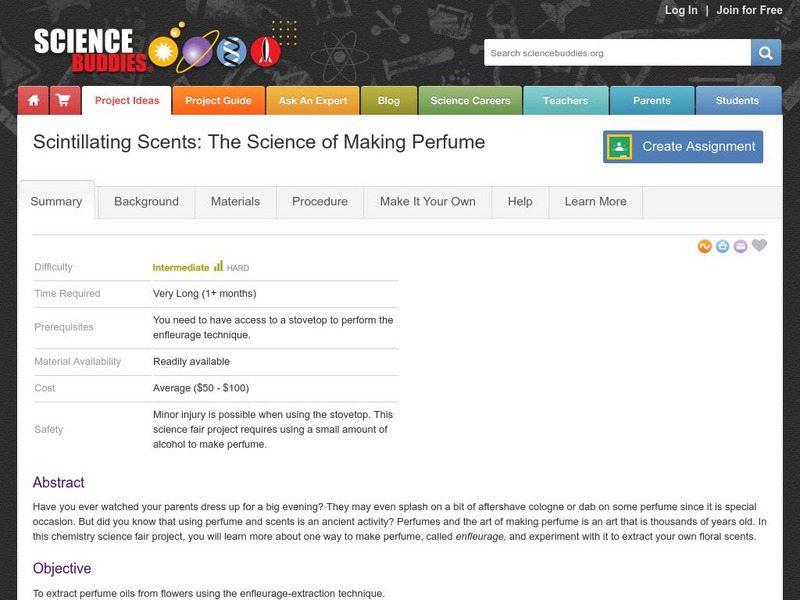Hi, what do you want to do?
Science Buddies
Science Buddies: Egg Cellently Cooked Eggs: The Process of Soft Boiling an Egg
Sometimes on a busy day, it's hard to get things done. The rush to get things done can start first thing in the morning, when you're so busy getting ready and gathering your homework, that you barely have time for breakfast. It takes...
Science Buddies
Science Buddies: How Greasy Are Your Potato Chips?
One of America's favorite snacks is potato chips. Although potato chips are very tasty, some varieties are not very healthy for you. A typical 1-ounce (oz.) serving of a well-known national potato chip brand contains 150 calories, 90 of...
Science Buddies
Science Buddies: How Sweet It Is! Measuring Glucose in Your Food
You know that sugar makes food sweet. But did you know that there are different kinds of sugar? Sucrose is the granulated sugar that you usually use for baking. Another kind of sugar, which is found in honey and in many fruits, is...
Science Buddies
Science Buddies: Home Sweet Biome: How Do Plants Grow in Different Environments?
In this science fair project you will learn about biomes and how different climatic conditions affect plant growth. This can explain why some plants and animals are similar in different areas of the country, and in other parts they are not.
Science Buddies
Science Buddies: Do You Have the Willpower to Taste Something Sour?
Do try this mouth-puckering science fair project to find out if people of all ages love sour tastes, or if there a difference between the sour preferences of kids and adults. You might be able to sell creations of your own based on your...
Science Buddies
Science Buddies: Old Salty: Does Age Affect the Ability to Detect Salt?
Sauerkraut, pickled fish, pickled vegetables, kimchi, corned beef, processed cheeses, smoked lunch meats. Do you like these high-salt foods? What about your grandparents, do they? Do your grandparents seem to like most foods to be a bit...
Science Buddies
Science Buddies: How Blue Is Your Sports Drink?
Do you read the list of ingredients in foods and drinks before you buy them at the grocery store? If you do, you may have noticed that many of the items that are blue in color have the same dye, called FD&C blue 1. In this chemistry...
Other
Science Fairs Homepage: Senior Projects
This resource from the Eastern Newfoundland Science Fairs Council provides really substantial projects for senior High School students. These are online topics, six areas, with about 10-20 topics per area.
Discovery Education
Discovery Education: Science Fair Central: Choose a Project Type Investigation
Discover how to approach a scientific question, and learn eight steps students will perform in doing so. Offers suggestions on how to ask a testable question as well as several examples.
Discovery Education
Discovery Education: Science Fair Studio: Coordinating a Science Fair
Access a wealth of resources for a coordinating a successful science fair. This section of the Science Fair Studio site is organized into several sections: "Why Do a Science Fair?", "Types of Projects,", "Science Fair Coordinator's...
Science Bob Pflugfelder
Science Bob: Science Fairs
Find out what the difference is between a science demonstration and a science experiment. Then explore Science Bob's page to learn about ideas for science fairs, the Scientific Method, science fair resources, and even some helpful advice.
American Geosciences Institute
American Geosciences Institute: Science Fair Project
A complete guide to carrying out the most successful science fair project. Includes graphic organizers for planning.
Science Buddies
Science Buddies: Project Ideas: How Horses Keep Warm in the Wind
In this mammalian biology science fair project, students will learn about methods of heat transfer and determine the best direction in which horses should stand in a cold wind to maintain their core temperature. The Science Buddies...
Science Buddies
Science Buddies: Project Ideas: The Reasons for the Seasons
In this astronomy science fair project, investigate how the earth's axial tilt creates seasons. The Science Buddies project ideas are set up consistently beginning with an abstract, objective, and introduction, followed by a section on...
Science Buddies
Science Buddies: Project Ideas: Are Childproof Containers Really Childproof?
In this science fair project, determine if childproof containers are effective and investigate if a child can learn how to open the containers with practice. The Science Buddies project ideas are set up consistently beginning with an...
Science Buddies
Science Buddies: Project Ideas: Pet Poll: A Taste Test for Fluffy and Fido
In this mammalian biology science fair project, students will determine which brand, type, or flavor of treats their pet prefers. The Science Buddies project ideas are set up consistently beginning with an abstract, objective, and...
Science Buddies
Science Buddies: Project Ideas: Crystal Ball Math: Predicting Population Growth
In this environmental science fair project, students will learn some of the ways in which the population growth of animals is modeled, and then use the logistic model to determine how a population grows when it starts far below, at, or...
Science Buddies
Science Buddies: Project Ideas: Cold Pack Chemistry: Where Does the Heat Go?
This science fair project shows you what you need to make an endothermic reaction, the coldness of which is governed by the amount of ammonium nitrate used. The Science Buddies project ideas are set up consistently beginning with an...
Science Buddies
Science Buddies: Project Ideas: Popping an Ollie: Skateboards and Physics
In this science fair project, investigate the effect of speed on the distance and height of the skateboard trick the "ollie". The Science Buddies project ideas are set up consistently beginning with an abstract, objective, and...
Science Buddies
Science Buddies: Project Ideas: Scintillating Scents: Science of Making Perfume
In this chemistry science fair project, the student will investigate the process of enfleurage, a method of extracting scents, to make and test perfume. The Science Buddies project ideas are set up consistently beginning with an...
Science Buddies
Science Buddies: Model Rockets Aerodynamics: Stability
This science fair project for Science Buddies lets you be the rocket scientist. See how the rocket design changes its performance. The Science Buddies project ideas are set up consistently beginning with an abstract, objective, and...
Science Buddies
Science Buddies: Project Ideas: The Biomechanics of Pitching
The goal of this sports science fair project is to learn more about the biomechanics of baseball pitching. The student will investigate if stepping forward and the length of the step affects the speed of the pitch. The Science Buddies...
Science Buddies
Science Buddies: Tick Tock, Does Your Mouse Know the Time on the Clock?
For this science fair project, you will build a device that records your nocturnal pet's activity by monitoring movement of its exercise wheel to see how it varies during the day and night. You can also experiment with various ways of...
Science Buddies
Science Buddies: Project Ideas: Transferring Heat by Convection in a Tank
In this engineering science fair project, students will determine the most effective method for quickly raising the temperature of a liquid in a tank. The Science Buddies project ideas are set up consistently beginning with an abstract,...
Other popular searches
- Science Fair Projects
- Science Fair Project Ideas
- Science Fair Project Data
- Tsunami Science Fair Project
- Science Fair Topics
- Science Fair Projects Ideas
- Science Fair Ideas
- Science Fair Experiments
- Science Fair Project Topics
- Science Fair Exhibit
- Science Fair Presentations
- Rockets Science Fair Project









